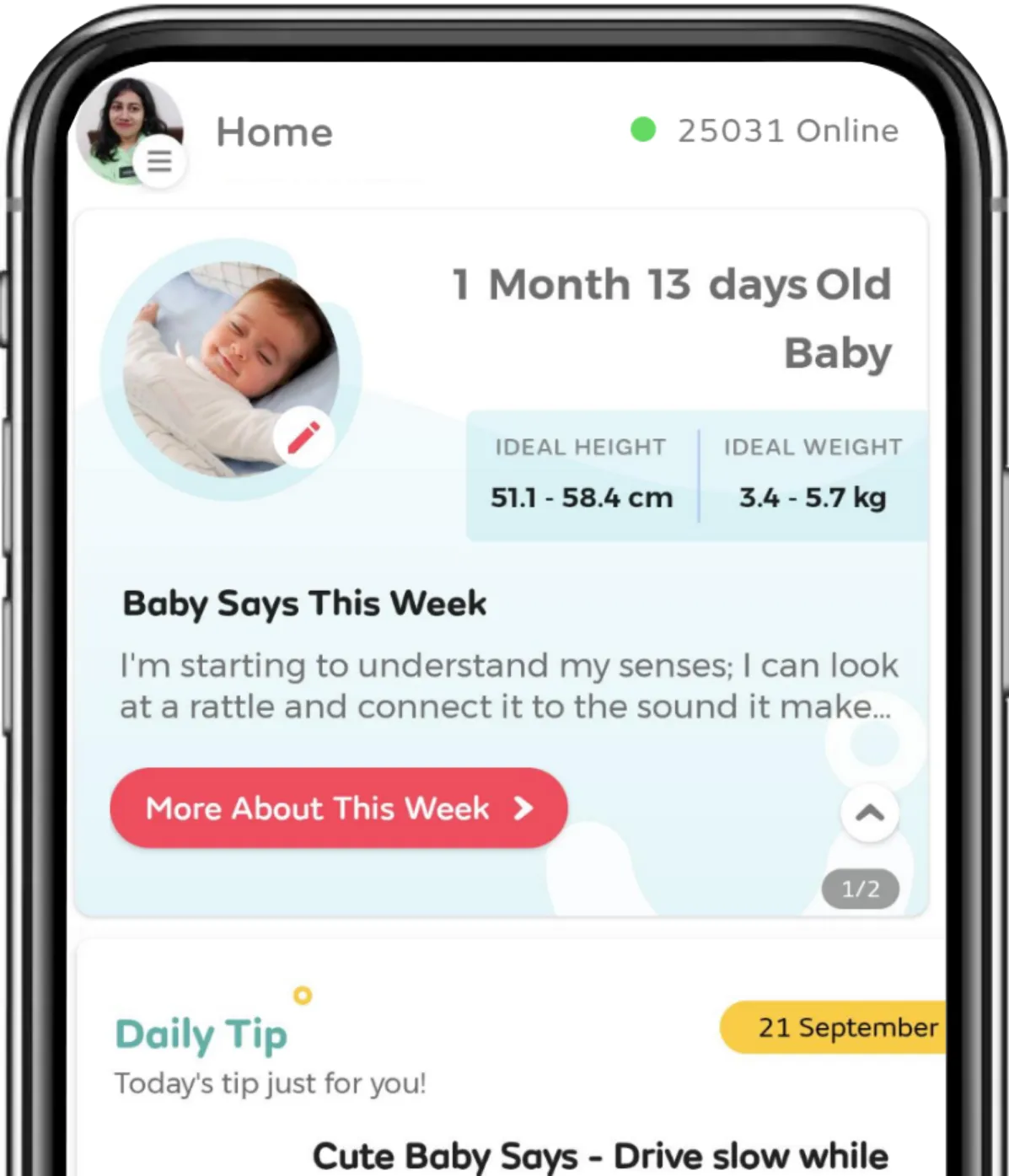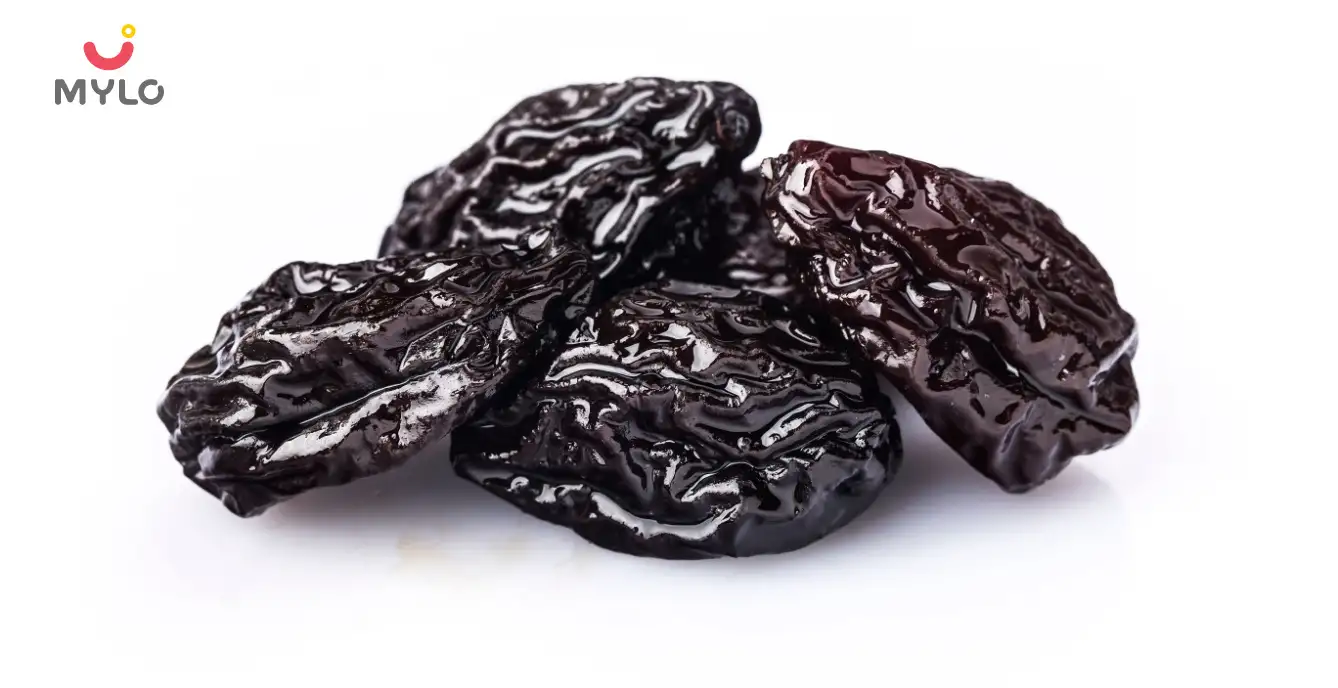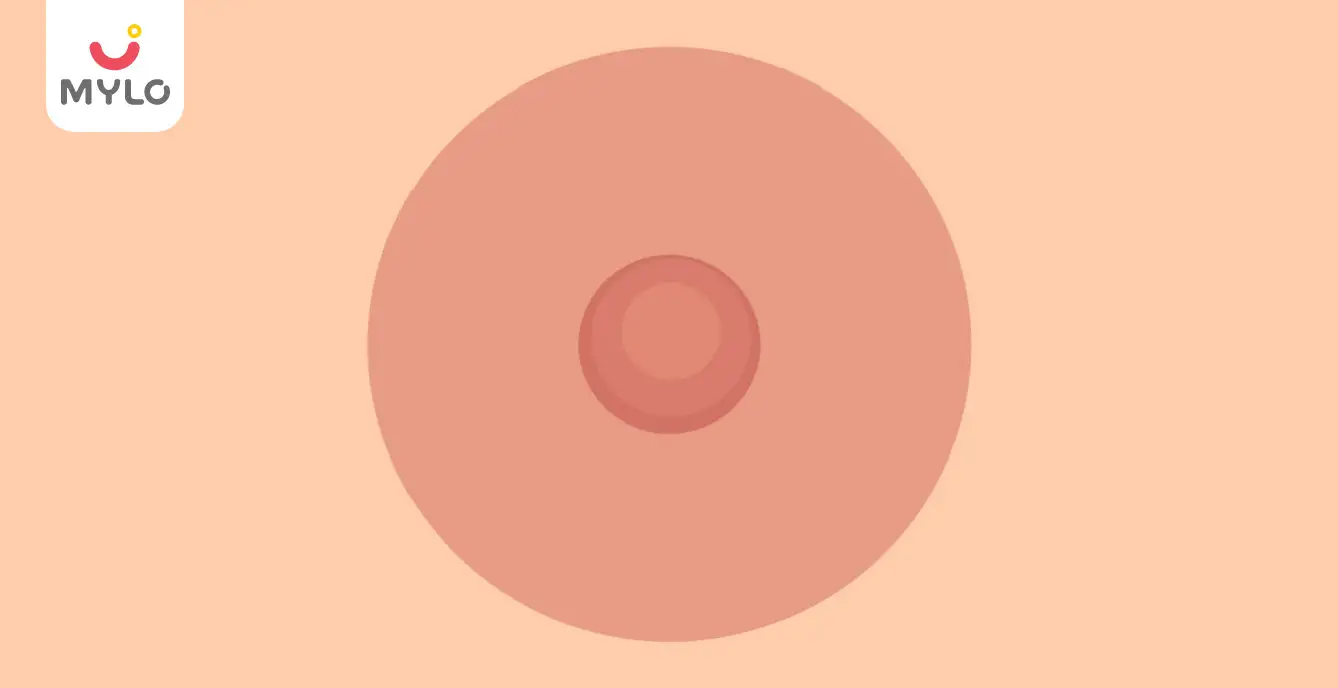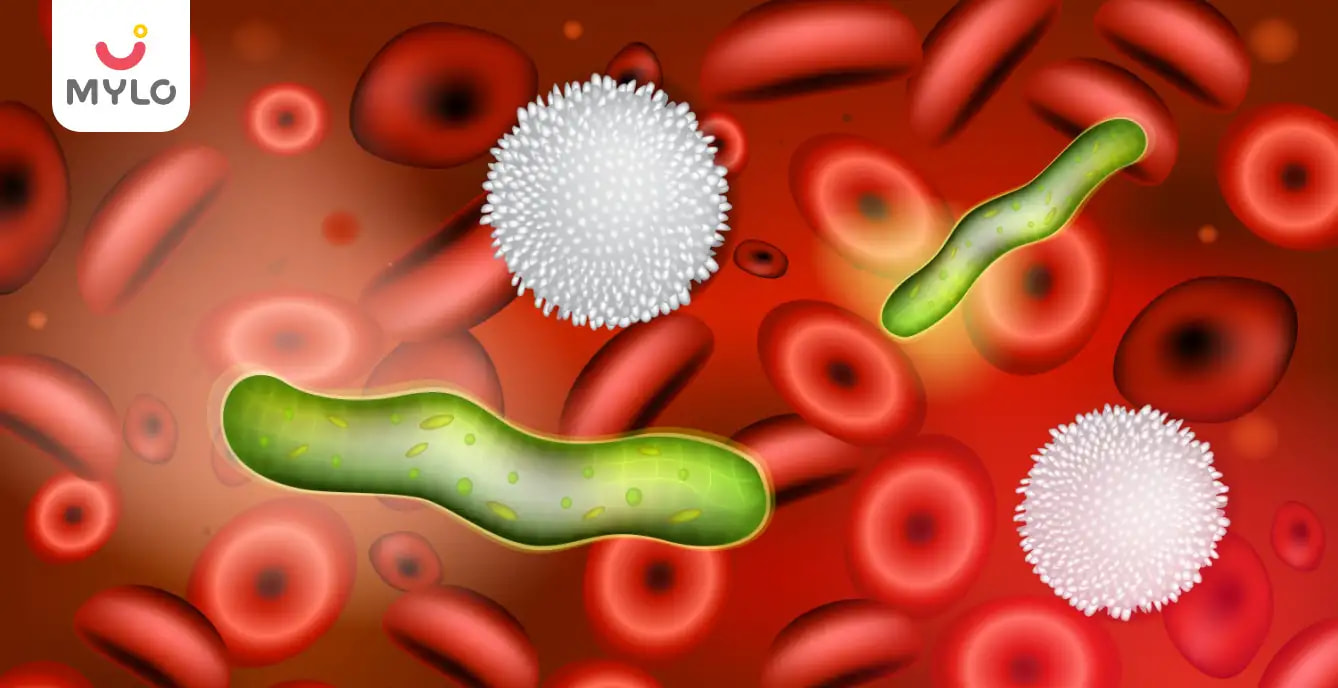- Home

- Symptoms & Illnesses

- Puerperal Sepsis: Symptoms, Causes, Risks & Treatment
In this Article
Symptoms & Illnesses
Puerperal Sepsis: Symptoms, Causes, Risks & Treatment
Updated on 3 November 2023
Puerperal infection, also called postpartum infection, is the infection of the genital tract occurring during labour or within 42 days of the postpartum period. It is a bacterial infection that occurs in the uterus and its surroundings following childbirth. It is the third most common cause of maternal death worldwide. Compared to puerperal sepsis, "puerperal infection" is more inclusive of all extra-genital illnesses as well as accidental infections.
What is puerperal sepsis? Read on to learn more.
Types of puerperal infections
It is described based on three areas where it can occur:
1. Endometritis:
uterine lining It is the most common area of infection.
2. Myometritis:
uterine muscle
3. Parametritis:
tissues around the uterus
Symptoms of puerperal sepsis
General symptoms of puerperal sepsis include:
-
Pain in the area of the pelvic bones or below the waist due to an irritated uterus.
-
Pale, clammy skin is indicative of significant blood loss.
-
Stench-filled vaginal drainage that indicates an infection
-
Faster heartbeat due to blood loss
The onset of symptoms could take many days. Infections can occasionally go undetected until after discharge from the hospital. Even after being let go, it's crucial to keep an eye out for infections.
Signs of puerperal infection are similar to those of a typical bacterial infection:
-
Fever
-
Chills
-
Body pain
-
Loss of appetite
-
Discomfort
Causes of puerperal sepsis
A healthy uterus is sterile. Bacteria such as Streptococcus or Staphylococcus, and other skin-dwelling bacteria, can cause infections by entering injured skin or tissue. The lower abdomen's warm, humid environment is ideal for these bacteria to grow.
Following the mother's labour, postpartum infections may begin in the uterus. Additionally, if the amniotic sac and its fluid contract an infection, the uterus may also do so. The membrane enclosing the foetus and its fluids is known as the amniotic sac.
You may like : Sepsis: Symptoms, Causes, Treatment & Risks
Risk factors of puerperal sepsis
The risk factor depends on the type of childbirth.
-
Natural delivery: lowest risk
-
Scheduled c-section delivery: moderate risk
-
Non-scheduled c-section deliveries: highest risk
Common risk factors include:
-
Pregnancy in very old or very young women
-
compromised immune system
Other risk factors include:
-
Multiple vaginal examinations throughout labour
-
Monitoring the foetus inside the uterus
-
Prolonged labour or delayed rupture of the amniotic sac
-
Removal of the placenta manually
-
incomplete removal of the placenta after delivery
-
Babies poop in the placenta after delivery.
-
Use of a catheter during delivery
-
STDs or other bacterial infections of the vagina
How is a puerperal infection identified?
Puerperal infection is identified by physical examination. The signs and symptoms are not seen immediately. The patient is asked to check for any increase in body temperature, bleeding, or foul-smelling vaginal discharge.
If required, a blood test can be done to check for the level of WBC. It tells us if the body is fighting an infection. Early identification can prevent it from progressing to septic shock.
What complications are caused by puerperal sepsis?
Puerperal sepsis complications occur when the infection is not identified at an early stage.
Possible complications include:
-
Pus formation
-
swelling of the stomach lining
-
Pelvic vein blood clot
-
Blood clot formation can further cause blockage in vital organs.
-
and septic shock, which is the last and most severe stage of infection. At this stage, very low levels of blood pressure are seen.
Treatment for puerperal sepsis
Puerperal sepsis is treated by giving antibiotics through the veins while the patient is still in the hospital. Medications called broad-spectrum antibiotics are preferred. They act against a large variety of bacteria when the type of bacteria is not known. If any symptoms are seen after hospital discharge, readmission may be required for treatment.
Once the infection is under control, oral antibiotics are given. During this time, the blood and urine bacteria are cultivated to identify the bacteria that is causing them. Rule out other causes of infection, such as retained bits of the placenta. Start IV fluids to prevent organ damage.
What are the chances of getting puerperal infections?
The chance of getting an infection depends on the risk factors. The chances are lower in natural deliveries and higher in c-sections. Various other factors increase the risk. 5–7% of women develop post-birth infections. These infections, when mild, can be treated, and the patient recovers well. Delay in treatment is what increases the susceptibility to sepsis.
How to prevent puerperal infections?
Certain things can be done to reduce the chances of getting a puerperal infection in women with c-section deliveries. These include:
-
Use of a tweezer to remove pubic hair
-
Taking a bath with an antibacterial soap the night before the surgery.
-
Keeping low blood sugar levels during pregnancy
During the surgery, the surgeon takes the following steps to prevent infection:
-
Disinfecting the areas of incision
-
Before the surgery, one dose of antibiotics is administered.
-
Giving a full course of antibiotics for bacterial vaginosis
For mothers who are to undergo a c-section delivery, it is important to know about infections like puerperal sepsis and consult a doctor.



Written by
Ishmeet Kaur
Ishmeet is an experienced content writer with a demonstrated history of working in the internet industry. She is skilled in Editing, Public Speaking, Blogging, Creative Writing, and Social Media.
Read MoreGet baby's diet chart, and growth tips

Related Articles
Understanding RSV And Its Long-Term Impact On Lung Health In Preterm Infants
Preventing Respiratory Syncytial Virus (RSV) In Preemies: Essential Steps For New Parents
How Respiratory Syncytial Virus (RSV) Impacts Premature Babies Differently: What Every Parent Needs To Know
Adverbs: A Comprehensive Guide to help small children learn the usage of adverbs
Related Questions
Hello frnds..still no pain...doctor said head fix nhi hua hai..bt vagina me pain hai aur back pain bhi... anyone having same issues??

Kon kon c chije aisi hai jo pregnancy mei gas acidity jalan karti hain... Koi btayega plz bcz mujhe aksar khane ke baad hi samagh aata hai ki is chij se gas acidity jalan ho gyi hai. Please share your knowledge

I am 13 week pregnancy. Anyone having Storione-xt tablet. It better to have morning or night ???

Hlo to be moms....i hv a query...in my 9.5 wk i feel body joint pain like in ankle, knee, wrist, shoulder, toes....pain intensity is high...i cnt sleep....what should i do pls help....cn i cosult my doc.

Influenza and boostrix injection kisiko laga hai kya 8 month pregnancy me and q lagta hai ye plz reply me

RECENTLY PUBLISHED ARTICLES
our most recent articles

Diet & Nutrition
গর্ভাবস্থায় আলুবোখরা: উপকারিতা ও ঝুঁকি | Prunes During Pregnancy: Benefits & Risks in Bengali

Diet & Nutrition
গর্ভাবস্থায় হিং | ঝুঁকি, সুবিধা এবং অন্যান্য চিকিৎসা | Hing During Pregnancy | Risks, Benefits & Other Treatments in Bengali

Women Specific Issues
স্তনের উপর সাদা দাগ: লক্ষণ, কারণ এবং চিকিৎসা | White Spots on Nipple: Causes, Symptoms, and Treatments in Bengali

Diet & Nutrition
গর্ভাবস্থায় পোহা: উপকারিতা, ধরণ এবং রেসিপি | Poha During Pregnancy: Benefits, Types & Recipes in Bengali

Diet & Nutrition
গর্ভাবস্থায় মাছ: উপকারিতা এবং ঝুঁকি | Fish In Pregnancy: Benefits and Risks in Bengali

Diet & Nutrition
গর্ভাবস্থায় রেড ওয়াইন: পার্শ্ব প্রতিক্রিয়া এবং নির্দেশিকা | Red Wine During Pregnancy: Side Effects & Guidelines in Bengali
- ইনার থাই চ্যাফিং: কারণ, উপসর্গ এবং চিকিৎসা | Inner Thigh Chafing: Causes, Symptoms & Treatment in Bengali
- গর্ভাবস্থায় ব্রাউন রাইস: উপকারিতা ও সতর্কতা | Brown Rice During Pregnancy: Benefits & Precautions in Bengali
- Velamentous Cord Insertion - Precautions, Results & Safety
- Unlock the Secret to Flawless Skin: 7 Must-Have Qualities in a Face Serum
- Unlock the Secret to Radiant Skin: How Vitamin C Serum Can Transform Your Complexion
- Gender No Bar: 10 Reasons Why Everyone Needs a Body Lotion
- Unlock the Secret to Radiant Skin How to Choose the Perfect Body Lotion for Your Skin Type
- Top 10 Reasons to Apply a Body Lotion After Every Bath
- Communication in Toddlers: Milestones & Activities
- How to Improve Vocabulary for Toddlers?
- A Comprehensive Guide to Understanding Placenta Accreta
- Vulvovaginitis in Toddlers Causes, Symptoms and Treatment
- A Comprehensive Guide to Understanding Cerebral Palsy in Children
- Bitter Taste in Mouth During Pregnancy: Understanding the Causes and Remedies


AWARDS AND RECOGNITION
Mylo wins Forbes D2C Disruptor award
Mylo wins The Economic Times Promising Brands 2022
AS SEEN IN
















At Mylo, we help young parents raise happy and healthy families with our innovative new-age solutions:
- Mylo Care: Effective and science-backed personal care and wellness solutions for a joyful you.
- Mylo Baby: Science-backed, gentle and effective personal care & hygiene range for your little one.
- Mylo Community: Trusted and empathetic community of 10mn+ parents and experts.
Product Categories
baby carrier | baby soap | baby wipes | stretch marks cream | baby cream | baby shampoo | baby massage oil | baby hair oil | stretch marks oil | baby body wash | baby powder | baby lotion | diaper rash cream | newborn diapers | teether | baby kajal | baby diapers | cloth diapers |





